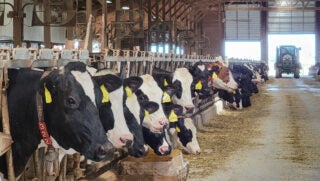The U.S. Department of Agriculture’s Farm Service Agency published the first notice of funding availability announcing loan payments for socially disadvantaged farmers and ranchers. The direct farm loan payments were made available by the Emergency Relief for Farmers of Color Act, which was a piece of the American Rescue Plan Act, the most recent coronavirus relief package. That included $4 billion in debt relief for minority farmers (along with an additional $1 billion in other aid). The USDA expects payments to begin in early June and continue on a rolling basis.
“The American Rescue Plan has made it possible for USDA to deliver historic debt relief to socially disadvantaged farmers and ranchers beginning in June,” said Agriculture Secretary Tom Vilsack. “USDA is recommitting itself to gaining the trust and confidence of America’s farmers and ranchers using a new set of tools provided in the American Rescue Plan to increase opportunity, advance equity and address systemic discrimination in USDA programs.”
Section 1005 of the American Rescue Plan Act provides funding and authorization for the USDA’s Farm Service Agency to pay up to 120 percent of direct and guaranteed loan outstanding balances as of January 1, 2021, for socially disadvantaged farmers and ranchers as defined in Section 2501(a) of the Food, Agriculture Conservation, and Trade Act of 1990.
However, a group of White farmers showed opposition to this new ruling and filed a lawsuit against the USDA for discrimination based on color.
Continue reading: “Agriculture and race: The complexities of rhetoric and reaction”
According to the ruling, a socially disadvantaged farmer or rancher is defined as a farmer or rancher who is a member of a socially disadvantaged group, which is further defined as a group whose members have been subjected to racial or ethnic prejudice because of their identity as members of a group without regard to their individual qualities. Qualifying loans as part of today’s announcement are certain direct loans under the Farm Loan Programs and Farm Storage Facility Loan Program.
In the press release announcing the start of funding, the USDA explained that during the history of the department, socially disadvantaged farmers and ranchers have faced discrimination — sometimes overt and sometimes through deeply embedded rules and policies — that have prevented them from achieving as much as their counterparts who do not face these documented acts of discrimination. Over the past 30 years, several major civil rights lawsuits have compensated farmers for specific acts of discrimination — including Pigford I and Pigford II, Keepseagle, and the Garcia cases.
However, according to the USDA, those settlements and other related actions did not address the systemic and cumulative impacts of discrimination over a number of decades that the American Rescue Plan is intended to begin to address.
The amount of farmland owned and/or operated by Black farmers is but a fraction of what it was 100 years ago, and many Black farmers struggle for equity at farmers markets and on supermarket shelves. There has long been barriers for this community to “land ownership, capacity to scale, access to labor, capital, and markets,” said Richard Morris, Urban Agriculture Collective Farm and Foodroots Program Director at Cultivate Charlottesville. He noted that, over the years, Black farmers have been “hampered at every step of the way due to systemic discrimination.”
In an op-ed in USA Today, Vilsack said, “The law directs USDA to pay off the farm loans of nearly 16,000 minority farmers and begin to address longstanding racial equity challenges that have plagued farmers of color for generations.”
The government says that Sections 1005 and 1006 of the American Rescue Plan provide the USDA with new tools to address longstanding inequities for socially disadvantaged borrowers. Section 1006 of the American Rescue Plan Act provides additional funding to begin long-term racial equity work within the USDA, including to address heir’s property claims and to start up an Equity Commission to identify barriers to access USDA programming.


